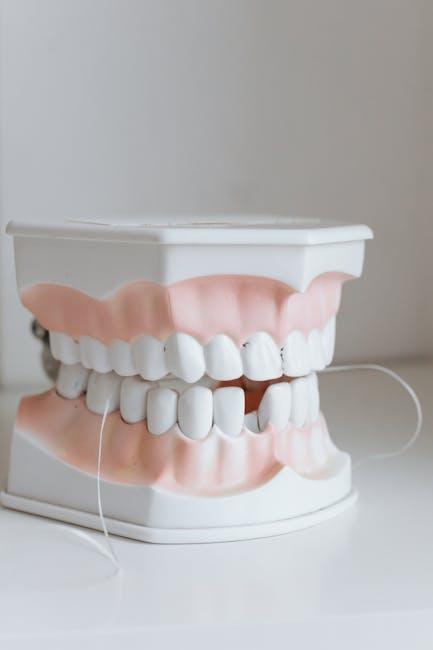
Fluoride Ban Could Create Cavities For 1 Of Every 3 U.S. Kids – U.S. News & World Report
Recent discussions around banning fluoride have raised alarm bells in the dental health community. According to a report by U.S. News & World Report, such a ban could lead to significantly higher rates of cavities among children across the United States — potentially affecting 1 in every 3 kids. In this article, we’ll explore why fluoride plays a critical role in oral health, the potential consequences of banning fluoride, and practical tips for parents committed to keeping their children’s smiles healthy.
What is Fluoride and Why is it Important?
Fluoride is a naturally occurring mineral recognized worldwide for its ability to strengthen tooth enamel and prevent dental decay. It is often added to community water supplies, dental products, and treatments because of its proven benefits in reducing cavities.
How Fluoride Works
Fluoride helps to:
- Remineralize enamel: Repairs early signs of tooth decay before cavities form.
- Make teeth more resistant: Protects teeth from acid attacks caused by bacteria and sugars.
- Reduce harmful bacteria: Limits the growth of the bacteria responsible for cavities.
The Impact of a Fluoride Ban on Children’s Oral Health
Eliminating fluoride from water and dental care routines can have serious consequences. U.S. News & World Report highlights that without fluoride, cavity rates could skyrocket for children. This is a concerning prospect because childhood cavities not only cause pain but can also lead to problems with speech, eating, and self-esteem.
Statistics: Fluoride and Childhood Cavities
| Condition | Current Fluoride Usage | Projected Without Fluoride |
|---|---|---|
| Children with cavities | Approximately 1 in 5 | Up to 1 in 3 |
| Dental-related school absences | 10 million days/year | Could increase by 50% |
| Cost of dental treatments | Lower due to prevention | Significantly higher |
Why Are Some Advocating For a Fluoride Ban?
Despite its benefits, fluoride has been a controversial topic with some opponents citing concerns about health risks or environmental impact. The most common arguments against fluoride include:
- Claims of potential toxicity if consumed in excess.
- Concerns around fluoride’s impact on thyroid function or brain development (though scientific consensus generally refutes these claims at fluoride levels used in water).
- Desire for natural, chemical-free water and dental care options.
However, leading dental and public health organizations like the American Dental Association (ADA) and the Centers for Disease Control and Prevention (CDC) continue to support fluoride use, emphasizing that it is safe at recommended levels.
Benefits of Fluoride for Children’s Dental Health
- Reduced cavity risk: Fluoridated water cuts cavities by about 25% in children.
- Equitable protection: Provides dental health benefits regardless of socioeconomic status.
- Cost-effective: Saves billions in dental treatment costs nationwide annually.
Practical Tips for Parents to Prevent Cavities
Even if fluoride availability changes, there are steps parents can take to maintain their children’s oral health:
- Regular dental check-ups: Schedule visits every six months for cleanings and exams.
- Good brushing habits: Supervise brushing twice daily with fluoridated toothpaste.
- Limit sugary snacks and drinks: Reduce acid attacks on enamel by cutting down sweets and sodas.
- Use dental sealants: Protective coatings applied by dentists can shield vulnerable teeth.
- Consider fluoride supplements or rinses: Consult your dentist on safe alternatives to water fluoride.
First-Hand Experience: A Parent’s Perspective
Jessica, a mother of two from Ohio — a state with community water fluoridation — shared her thoughts:
“Since fluoride has been part of our water and dental care, my kids have rarely had cavities. Hearing about the ban made me worried that my children might end up with painful dental issues that could have been prevented. I make sure they brush daily and visit the dentist regularly. I hope communities understand the importance of fluoride in protecting our kids’ teeth.”
Conclusion: The Case for Maintaining Fluoride in Public Health
The potential fluoride ban poses a serious threat to the oral health of millions of children in the United States. With the risk of cavities potentially rising to affect 1 in every 3 kids, it is crucial for policymakers, parents, and healthcare professionals to rely on scientific evidence supporting fluoride’s safety and efficacy. Promoting continued use of fluoride — alongside good dental hygiene and regular dental care — remains the best strategy to ensure healthy, cavity-free smiles for children nationwide.
Stay informed, protect your child’s oral health, and consult trusted dental professionals to navigate changes in fluoride policies effectively.


